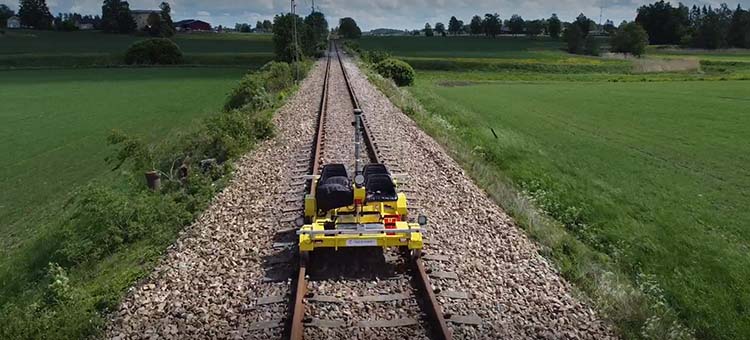
A robot with an automatic drive that travels around and inspects the rails can hopefully lower the cost of railway maintenance and reduce delays. In any case, that is the goal of the maintenance robot developed by researchers at Chalmers.
"Today, the problems on the railway tracks are often fixed only after they have occurred, and it becomes expensive for society to close sections for long periods of time. With the help of this robot, problems can be quickly detected and fixed before an accident or derailment occurs, while increasing accessibility for travelers and cargo traffic and saving money for society. In addition, safety is increased for those who work with railway maintenance", says Krister Wolff, a docent at Chalmers and project manager for the development of the railway robot, in a press release.
A prototype of the autonomous robot was tested earlier this summer on an authentic railway track. There, the robot managed to detect a fake damage that the researchers had rigged on the rails. The robot can detect the damage, stop and send information about exactly where the damage is and at what time it was discovered.
With the help of cameras, 3D lidar, GPS, an accelerometer and loads of training data, the robot can run on the rails without any human intervention. It recognizes and can react to changes in the environment. This means that, among other things, it slows down when meeting other trains and at road crossings, as well as reading signs and signals on the track.
The researchers will now continue to develop the robot and make it even more independent by possibly also giving it some ability to carry out maintenance on its own.
"Let's say a train needs to make a heavy deceleration and the driver suspects that it caused damage to the rail itself. Then the driver can raise the alarm and have a robot sent out that makes a quick damage assessment and may even be able to fix the damage on the spot", says Krister Wolff.






